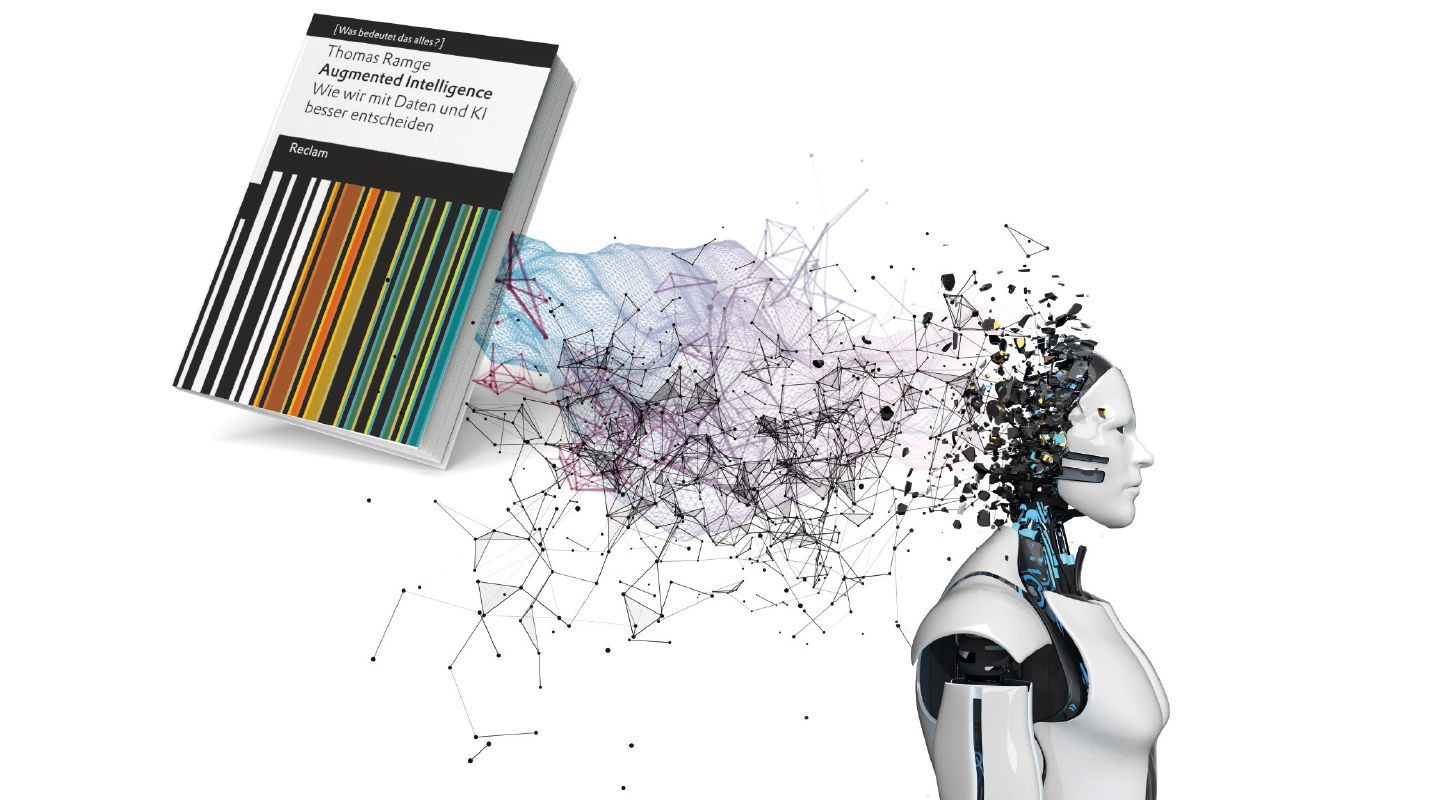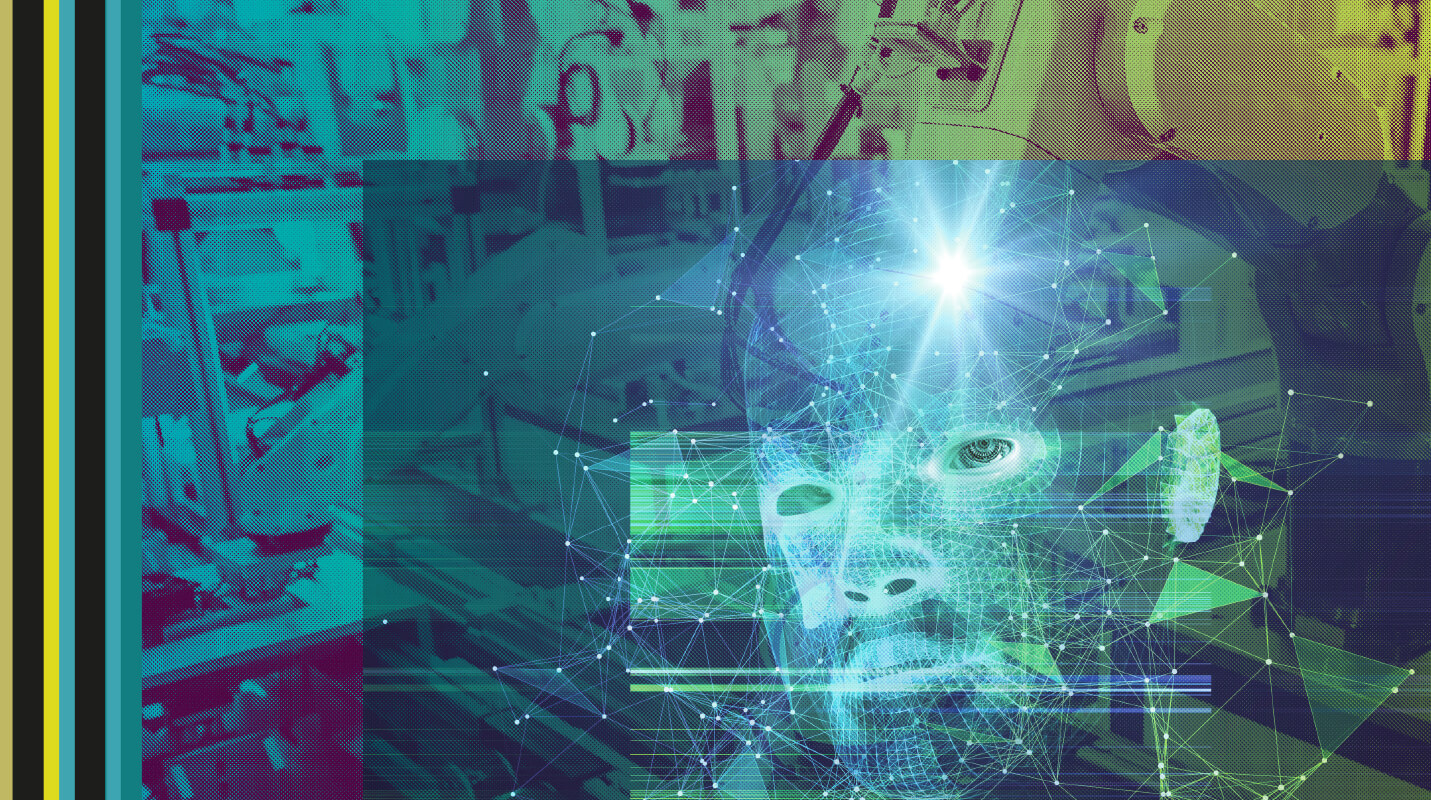THE INTELLIGENCE OF DECISION-MAKING STAYS WITH US
The publicist Thomas Ramge is a multi-awardwinning non-fiction author. In his books, he regularly addresses the topic of artificial intelligence and the human-machine relationship. After the works „postdigital“ and „power machines“ published in 2020, this is also the focus of his current publication „Augmented Intelligence. How we make better decisions with data and AI“. „When it comes to decisions under high uncertainty, no computer can help us.

DIALOG: Mr. Ramge, what shapes our relationship with “Artificial Intelligence”?
TR: Misunderstandings and ambiguities. Our ideas about artificial intelligence are strongly influenced by science fiction: machines that decouple themselves from humans, subjugate them or wipe them out. But according to the state of science, these are completely absurd scenarios. We know of no technological development path on which this could actually happen.
In addition, the term “artificial intelligence” is imprecise; there is no real common sense. This is also reflected in the fact that we overestimate the future performance of AI and at the same time underestimate that of computers or systems that already work with machine learning. After all, the term “artificial intelligence” also implies that computers would be subject to the same limitations as human intelligence. This is not the case either - in computing, in storing knowledge and many other things, technology has of course long been superior to us.
DIALOG: Why do you prefer to speak of “augmented intelligence”?
TR: The term “augmented intelligence” refers more precisely to a crucial aspect of the relationship between humans and technology. It is intended to show what systems that learn from data are suitable for: augmenting human intelligence.
That is the core of the idea: to get out of the hype that AI will become infinitely smart and do our work for us. Rather, it’s about understanding that systems that learn from data can support us humans in more and more areas to do things better, faster, cheaper and more precisely, even to the point of automating routine decisions. So what if we think of AI not as a technology that replaces human intelligence, but enhances it? In fact, this was already a core idea of early AI research in the 1960s, which is receiving renewed attention today.
DIALOG: So, in the near future, an AI could accompany us as a “personal assistant”, giving us advice even on more serious decisions than compiling a playlist?
TR: The assistant role describes it well. But when it comes to decisions, you have to differentiate. There are decision-making situations in which data-learning systems have a good data basis to predict with a high degree of probability which is the better option - see route planning as a classic example. In such situations, we are well advised to delegate the decision to AI.
But as soon as it comes to decisions under high uncertainty, no computer can help us. At least not until it has been able to record enough comparable situations to calculate a forecast of what the future might look like. This is much easier with your playlist than, for example, with the question of which degree programme you should choose. Decisions are essentially simulation or projection exercises. We project ourselves into variants of the future and then consider whether future A or future B is the more interesting or better path for us. But neither the computer nor we know the future.
DIALOG: What do you see as the strengths of AI then?
TR: In the more mundane help than the big philosophical questions. AI can help me work on my options. An example: On the one hand, we are often overwhelmed by the information overload and the options that computers give us. At the same time, however, IT systems with taxonomies, i.e. filters, can help us to narrow down the choices. By using recommendation algorithms or search grids, a decision-making assistant helps us to work out the options for a decision in the first place. However, this is also where the limits of AI’s capabilities become apparent. A machine or technology can assist us in searching for something. It can even help us to refine the search. But as a rule, it cannot tell us what we should be looking for in the first place. But that is the core of decision intelligence.
DIALOG: Now you may be overestimating human capabilities ...
TR: Of course, one should always question the human sense of responsibility and the human ability to make decisions. And from an AI perspective, humans may indeed be a weak opponent. We constantly fall into decision-making traps where all kinds of things get in our way: our biases, our emotions, our short-sightedness, or our greed - all factors that do not occur in well-programmed machines.
DIALOG: Yet we make better decisions ...
TR: Not necessarily, but that is of course a very limited way of looking at it. What actually constitutes the performance of AI? We are talking exclusively about repetitive tasks, i.e. situations that occur again and again and can be easily reproduced digitally. Wherever this is the case, intelligent machines are well on their way to topping human decision-making intelligence and, as a rule, to taking over previously human activities. Wherever this is not the case, we currently know of no technologically sensible ways to realise this.
But what really makes human intelligence is the ability to figure out what to do when we don’t know what to do - as cognitive scientist John Piaget aptly put it. So to speak, to move in a “data-poor” space with our human curiosity. At the moment, this is also the limit to which AI can help us.
DIALOG: At the same time, the algorithms will continue to improve themselves. How should we deal with that?
TR: We have to be able to recognise whether machine assistance is really useful to us or not. That is the crucial competence we need to develop - in line with the concept of augmented intelligence.
This frontier will shift further and further towards the machine in many areas, which is good news per se. It can make our lives better, safer, healthier. This includes relieving us of routines that we don’t feel like doing or that are difficult for us. This in turn gives us space, time and energy for things that machines cannot support us with.
DIALOG: What about human intuition - can it be represented in code?
TR: In fact, AI is often quite intuitive. Intuition is basically an unconscious decision-making mechanism, based on the experiential knowledge we gather in the course of our lives, supported by “rules of thumb” that we know explicitly or feel implicitly, but in any case, no longer run cognitively consciously.
However, this means that we are generally in the field of patterns or pattern recognition and thus in an area where machines that learn from data can help us, for example by challenging us with artificial intuition, in the sense of an intuition assistance. It is conceivable to have a computer that reflects our thoughts, in the sense of: “Something is not right here. I don’t know what it is either, but think again.” That would also be a great help that could support our human intelligence in our striving to know more, to decide more intelligently, to develop new things.

